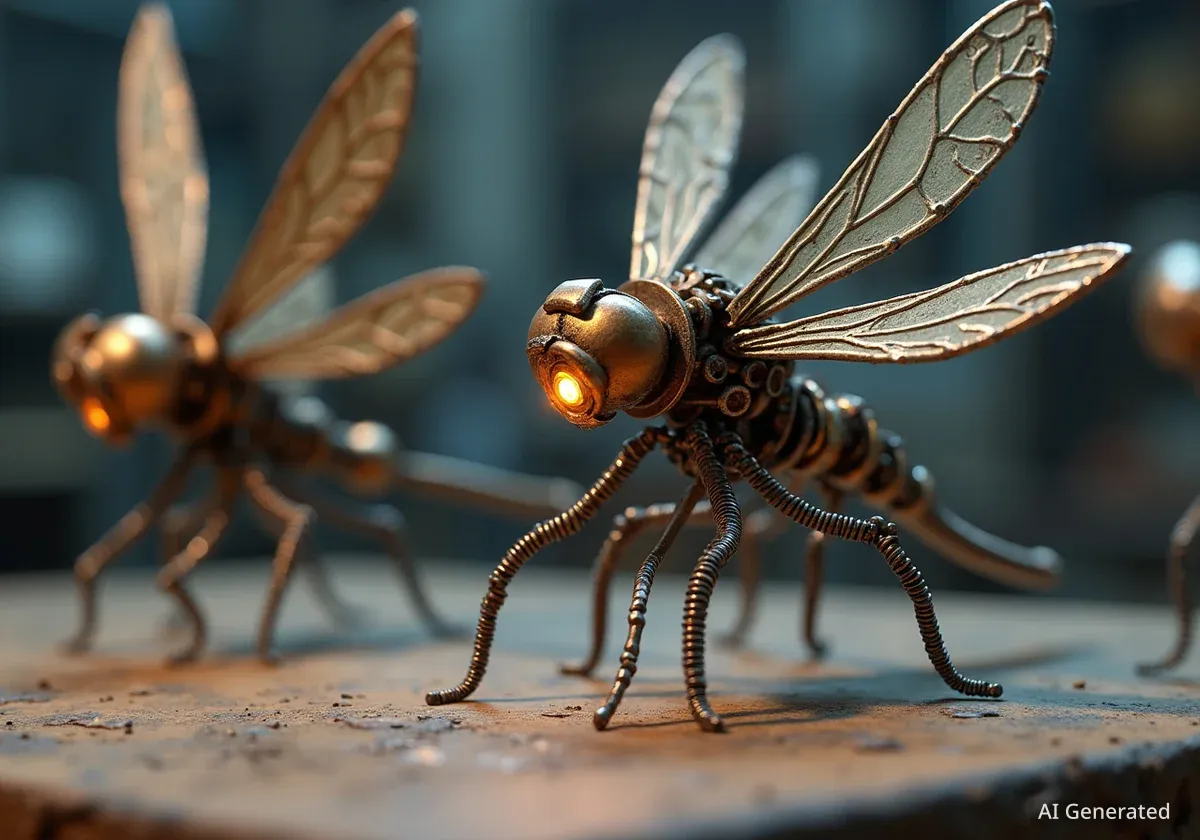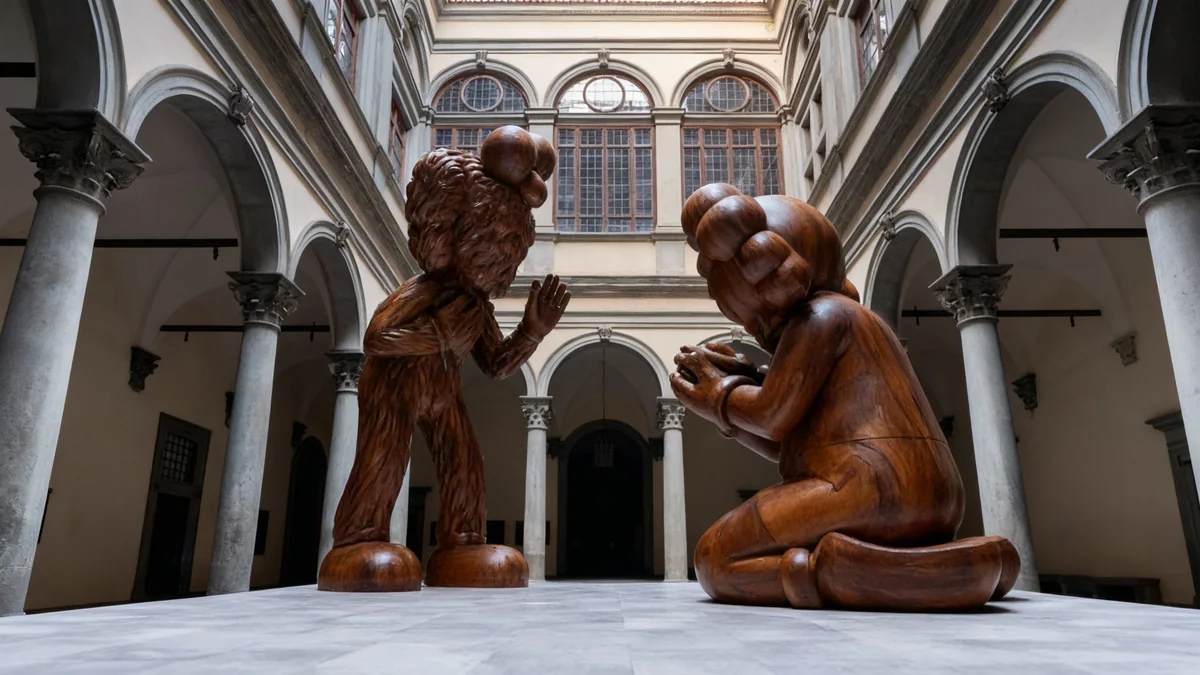Artists worldwide are transforming discarded scrap metal into intricate, lifelike sculptures, giving new purpose to industrial waste. These creations range from delicate insects with working lights to massive animal figures, showcasing a blend of artistic vision and engineering skill.
Key Takeaways
- Artists utilize diverse scrap materials, including electronics and industrial metal, for their creations.
- Sculptures often feature biomechanical elements, mimicking organic forms with mechanical parts.
- The movement highlights sustainability, turning waste into valuable art pieces.
- Techniques range from blacksmithing to welding, demanding both artistic and technical skills.
Argentine Artist Creates Living Metal Figures
Guillermo Galetti, known as Ladrón de Chatarr or "Scrap Thief," is an Argentine artist making waves with his biomechanical sculptures and automata. By day, Galetti is a teacher. By night, he transforms recycled scrap metal and other discarded materials into characters that appear to come alive.
His work combines incredible skill with inventive design. Each piece is a testament to how imagination can repurpose what others consider junk. Galetti’s sculptures often feature gears, springs, and various metal components, carefully assembled to suggest movement and life.
Did You Know?
Some artists use hundreds of individual scrap metal pieces for a single large sculpture, each element carefully chosen for its shape and texture.
From Tiny Insects to Towering Animals
The scope of scrap metal art is diverse. Zak Miskry, for example, built a realistic dragonfly and a firefly. These small kinetic sculptures even include working lights, demonstrating precision engineering alongside artistic flair. He used scrap metal combined with recycled electronics to achieve this effect.
On a much larger scale, South Dakota artist John Lopez creates lively animal sculptures. Lopez, originally a bronze sculptor, discovered scrap metal art in 2006 while working on a cemetery project on his uncle's ranch. His works capture the dynamic energy of animals, often featuring horses, buffalo, and other creatures native to the American West.
"This seemingly random assortment of metal dictates its future in a very fast and spontaneous manner," one artist noted about the creative process.
This approach highlights the organic nature of working with found objects. The materials themselves often inspire the final form, leading to unique and unexpected results.
The Rise of Recycled Art
The movement to create art from recycled materials has grown significantly. It reflects increasing environmental awareness and a desire to reduce waste. Artists are finding beauty and potential in discarded items, transforming them into thought-provoking pieces that challenge perceptions of value.
Diverse Techniques and Global Reach
Artists employ various techniques to manipulate scrap metal. Blacksmithing, welding, and meticulous assembly are common. Robert Jefferson Travis Pond, a Portland-based artist, builds stunning animal sculptures from salvaged metal parts. His process often involves a spontaneous approach, allowing the metal pieces to guide the sculpture's development.
Thomas Dambo, a Danish artist, takes a different route, creating large, humorous sculptures from reclaimed scrap wood and other discarded construction materials. While not strictly metal, his work shares the same ethos of transforming waste into public art. His sculptures are found in cities across Denmark and even in Puerto Rico, showcasing the global appeal of recycled art.
The Practical Side of Repurposing
Beyond visual art, some musicians are also recycling trash into playable instruments. This demonstrates the versatility of discarded materials and the innovative spirit of artists. It also highlights a practical application of repurposing, where waste gains a new functional life.
- Material Sourcing: Artists often gather materials from junkyards, construction sites, and electronic waste facilities.
- Environmental Impact: This art form directly contributes to waste reduction and promotes sustainable practices.
- Community Engagement: Many large-scale recycled art projects become public installations, engaging communities and raising awareness.
British Artists Join the Movement
British artist Barbara Franc creates animal sculptures using wire and recycled metal scraps. Her work focuses on the sculptural forms of animals, finding endless inspiration in their shapes. Franc's pieces are often available in galleries, demonstrating the commercial viability and artistic acceptance of this medium.
The global community of artists dedicated to transforming scrap into art continues to grow. These individuals not only create aesthetically pleasing works but also send a powerful message about sustainability and the potential for creativity to redefine waste.
The intricate details and sheer scale of some projects are remarkable. From the delicate, almost fragile appearance of wire sculptures to the imposing presence of large welded animals, scrap metal art pushes boundaries. It proves that beauty and meaning can be found in the most unexpected places, particularly in materials destined for landfills.
Artistic Transformation
The process of turning scrap metal into art often involves cleaning, cutting, shaping, and welding. Each step requires patience and a deep understanding of the materials.
This artistic movement is more than just recycling; it is an act of creation that breathes new life into forgotten objects. It challenges viewers to reconsider the value of discarded items and appreciate the ingenuity required to transform them into captivating works of art.




